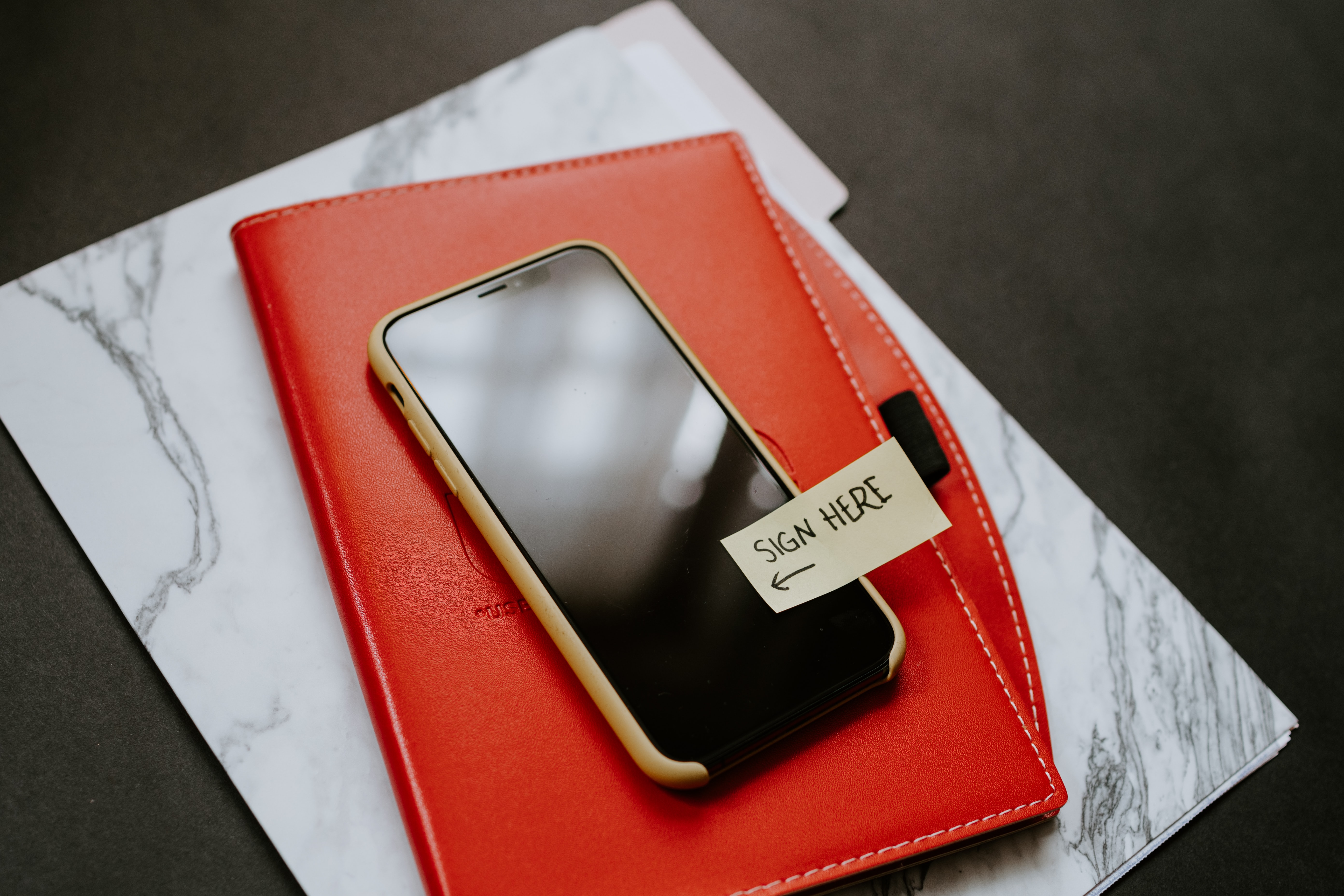
“How I feel or you feel is extremely crucial as it sets the motivation and conviction for the change that we want in our lives.” Read more Connecting to Feelings
the centre of our interest or activity. The thing we pivot around.

“How I feel or you feel is extremely crucial as it sets the motivation and conviction for the change that we want in our lives.” Read more Connecting to Feelings

In my week off after New Year, I treated myself to a Masters Swimming intensive camp designed to help the more ‘mature’ swimmer with their swimming style, stroke and overall efficiency in the water.
It turns out that for years I have been slightly off time in my freestyle stroke – effectively slowing me down and reducing my efficiency in the water by a lot! By making just 2 or 3 minor changes to my stroke I seem to be stronger in the water and faster.
Minor changes – yeah, right! Turns out that those minor changes take a lot of think time and focus, and before the 50m tumble turn my mind is finding hard to concentrate on even one of those 3 changes.
I’m slower in the water, feel like I’ve lost all form, and most definitely am more puffed out and exhausted than ever.
But then I remind myself that you ‘have to slow down to speed up.’ Even the coach reassures me that my speed will improve as I get used to the new way of working in the water. It just takes time and lots of repetition to re-train my brain. By my 2nd regular training session yesterday I was finding it easier, but don’t feel like I’m even close to half way there.
I’ve moved from unconscious incompetence, through conscious incompetence and into having to be very consciously aware and present to maintain what I have learned. I am a while off from being unconsciously competent like the rest of the squad in the faster lanes.
And then my coach shouts out “and remember to kick!” Ha! Fat chance – maybe next month?
It brings home how even the smallest changes we make need to be reinforced regularly in order to make them feel normal. At work, we expect people to adapt and adopt to change at an increasing rapid rate. Perhaps we need to reset our expectations and acknowledge that it takes us time to change. Maybe we have to plan time into our change management to ensure people can process and incorporate the changes being made, into their consciousness.
And as for New Year resolutions – no wonder they are rarely fulfilled – you have to change!
Ak Sabbagh


Are we a nation that fears failure? Leadership expert Ak Sabbagh thinks so, and he thinks it needs to stop if we want to move forward.
See Aks recent podcast with 6PR Chris Ilsley here: https://www.6pr.com.au/podcast/is-there-a-way-to-fail-better/


The average age of a mid-size company owner in Australia is between 57–75 years old, and yet more than 75% of them don’t have any form of planned succession.
It’s no wonder that we regularly see business transitions occur with frantic, unplanned haste and no real value for current owners.
But it doesn’t need to be that way if you plan out your process.
Below are eight considerations to get you and your business ready to pass the baton onto the next owner.
First, decide whether you are really ready to sell your business. Ask yourself what is motivating you to sell.
If the business is underperforming, while you may want to exit now, it might not be a good time.
If you have a major life event (divorce, death, illness) in your personal life then it might not be a good time either.
If it’s just ‘time to sell’ and you have planned for it, then you have many options. You could sell to some of your key staff (or help them acquire into the business), to a competitor, or to some form of financial investor (like private equity).
Secondly, ask yourself if you are moving towards something important to you, or running away from something you don’t want anymore.
Your answer will change how you exit and who you engage with.
In particular, the answer to that question gives an indication of how quickly you want to exit and why.
If your driving motivation is to simply get out, and speed is the most important factor, then you want to engage with as many people as possible and have a clear understanding of the minimum price you will expect.
Third, be in the buyer’s mindset, not the seller’s.
Will you hand over the business to just ‘anyone’?
Are there any persona non grata? Are there organisations you would hate to see own your business?
What should the new owner be like, since they can’t be a replica of you?
What is your ideal person or company as a buyer and why?
Identifying your ideal buyer means you’ll know them when you see them. Otherwise, anyone looks good.
Once you’ve figured out your plan, the fourth step is to get your house in order.
If you have no formal contracts, no formal documentation, a shoebox full of receipts, do you really have anything to sell?
It’s time to ensure you have invested in the right structure, systems, processes, people, and documentation so that the business is ready for sale.
The fifth step is to understand what your business is really worth to someone else.
Don’t confuse what you want for the business, or need for future life, with what the business is worth.
The first step is to do your own research. Find businesses that are similar to yours that have sold recently and go and speak directly to the past owners about it, not only what they got but also what the process was like.
But don’t just take one person’s word for it; consult widely.
Step six is to understand all your options and make a choice.
To understand your options, don’t just ring your accountant or broker. Your sale process should be tailored specifically to the answers above.
Engage a professional who will help you find the right buyer who meets your criteria and can pay what the business is worth.
That buyer could be an employee, a customer, competitors or supplier.
Next, think beyond price. What someone is willing to pay will be different depending on when and how they have to pay.
Vendor terms, deferred components and conditional components are normal for reasonable sized businesses.
Flexibility may get you more, so if you want to maximise the price, expect to offer vendor finance and/or get a deferred payment.
Step eight is to remember the business is yours until you pass the baton, but not a minute longer.
Be sure to plan for the distraction of the sale process, but you must continue to drive the business until you’ve sold it.
When you’ve finally got past the sale, you will have changed your identity overnight.
You are no longer a business owner. So, what are you?
The real work starts now. Plan for what you will be doing and how you will be talking about yourself.
https://www.smartcompany.com.au/finance/buying-and-selling/eight-considerations-business-succession/

“Good things come to those who wait.” It is a saying that we are all used to, but sometimes in business quick wins are equally important.
This week I (Ak Sabbagh) was delighted to be invited to speak to a dozen or so CEOs as part of Bruce Fielding’s CEO Institute chapter here in Perth. The topic was about not wasting a good crisis and using the time to be innovative and creative in your business.
We agreed that innovation does not mean that the business has to invent the cure for cancer or a new revolutionary app. Indeed, many of the CEOs present were able to share how smaller innovations (like changes to current products and services, and tweaks to processes) have helped them to remain “business fit” in uncertain times.
With innovation comes ‘change.’ Change is an interesting thing – and right now, for many of us it feels like we are experiencing ‘change fatigue.’ Who isn’t exhausted by the amount of change that we are experiencing either directly or indirectly at the moment?
This led us to a conversation on our personal relationship with ‘change’ itself. How do you feel about change? For some, it is an exciting opportunity to challenge, create and grow. For many, the mere thought of change brings up fears. The fear of loss of control or agency, the loss of security and certainty, etc.
It turns out that these fears stem from deep seated chemistry within our brains. In recent conversations with applied neuroscientists Lyra Puspa and Dr Paul Brown, I learned that our brains are naturally ‘lazy’ and love habit because it preserves energy. This trait is essentially a key to survival. Brains learn to become lazy by creating habits. And as we get conditioned to those habits, (i.e. become creatures of habit), this reduces how much energy the brain exerts on doing things.
It’s why we look at systemising processes and creating procedures in what we do.
But there are times where we need to change the systems or the processes. That means we need to change our habits, and our natural tendency is to resist the change. Why? Because it means our brains have to work more to learn the new way of doing things. This works at the most fundamental level – can you recall the agitation created the last time an invited guest sat at your dinner table in ‘your spot’ or your 2nd child’s usual chair? Breaking the norm challenges us.
So one of the key success factors in any change program is to determine ‘quick wins.’ Incremental changes that move us towards the ultimate goal without a need to make major shifts all at once create an environment where ‘quick wins’ get associated with positive rewards (I guess that’s why they call them ‘wins’). A quick win sets off good chemistry in the brain. Small, incremental, habit forming changes that are positively reinforced set off ‘liking’ and ‘wanting’ chemical markers of motivation (opioids and dopamine). In contrast, change that cause negative reinforcements sets off cortisol – a key stress marker.
So, what are the innovations you are introducing that are creating positive motivations? Creating new, constructive habits? We’d like to know what’s been going on with you in your business.
Join us this coming Friday 21st August at 9am WST with other business leaders and owners for a Zoom conversation to discuss what we’ve collectively learned, what we take forward, leave behind, and how we Find a New Balance.
Join us to Find a New Business Balance, click here to register now.
Ak Sabbagh
Coach & Mentor
Director

As business coaches and mentors, my colleague Margaret Armitage and I are often asked by clients and contacts “what are you seeing ‘out there?’.” Over the past 6 months of our shared Covid-19 winter in Australia, we have lost count of how many times this question has been asked.
Our response feels somewhat ‘bi-polar.’ It all depends on what lens you see the world through and how you interpret that input. We do see the tough side of how some businesses are not coping well, but in the main we are experiencing and seeing positive outcomes.
Part of the reason for this is that, as generally positive people, we tend to attract clients who are optimistic by nature, are open to learning and growth, possess a ‘on-purpose’ mindset, and have a creative ‘open’ quality about them.
When I shared this observation with a client last week, her response was “So I guess you’d call yourself a ‘glass half full’ person, then?” My response: “Well that depends…”
I find the “glass half full/empty” analogy problematic as it never really considers CONTEXT. And context determines (consciously or unconsciously) so much.
With respect to the glass, we must consider its purpose. What is the glass for? If it is for beer, then for a beer enthusiast, half full OR half empty is not a good situation – it’s only a half a glass of beer. If it is half full it will be too full for a red wine lover. And if cognac is your thing, then the glass is most certainly over full – even at half.
You can apply the same logic to most things. When it is raining, is that good or bad weather? It’s great if you are on the farm and need rain, and not so great if you promised the kids a camping weekend! In the end it’s a judgement call on a situation, and in the same way we judge anything as ‘good’ or ‘bad,’ our attitude and perspective/context dictates the outcome.
The “glass half full/empty” concept is often used as an analogy to describe a person as being either an optimist or a pessimist. Australian research just released by the QIMR Berghofer Medical Research Institute shows a link between pessimism about the future and a greater risk of dying earlier. It showed that, on average, participants who scored higher on pessimism were likely to die two years earlier than optimists. Interestingly, a highly optimistic perspective did not show extended life expectancy above the average life expectancy.
Regardless, what I take out of the research is that while you may not live longer than average by adopting a positive/optimistic attitude towards life, business, and the world at large, it certainly doesn’t hurt. And when we work with positive, and optimistic business owners, we witness incredible creative energy that spins off opportunity and a sense of Agency (refer to Margaret’s blog last week) and certainty in a world that for others seems out of control.
It’s time to stop thinking about how bad (or in some cases, good) the whole Covid-19 situation is – enough energy is wasted there already. Instead, if we simply acknowledge that it is what it is and ask how we can make the most of it, then we can begin to see a way out.
So what are we seeing out there? We are seeing optimistically minded business owners making lemonade from a pretty bitter lemon. Among other things we see them:
Above all they are not waiting for a ‘new normal’ to form. They are pro-actively creating, defining, and shaping the new normal for themselves and their businesses.
What are you seeing out there? What have you heard? What have you learnt?
We would love to know…
Are you waiting for a ‘new normal’ to form or are you pro-actively creating, defining, and shaping a new normal for yourself and your business?
If you belong to the optimists doing the latter, then please join us on 21st August at 9am WST with other business leaders and owners for a Zoom conversation to discuss what we’ve collectively learned, what we take forward, leave behind, and how we Find a New Balance.
Join us to Find a New Business Balance, click here to register now.

Last year my work colleague Ak Sabbagh, who often has moments of startling wisdom, wrote a blog about the similarity between Astronoauts and Business Coaches in which he explained that the gift they both have is PERSPECTIVE. To quote from Ak’s blog –
It is a phenomenon called the “overview effect” – described by space philosopher and author Frank White as “seeing the Earth from a distance, and realising the inherent unity and oneness of everything… The viewer moves from identification with parts of the Earth to identification with the whole system.”
The “Overview Effect” was brought back down to earth in COVID-19 and became a powerful exercise regime for keeping our coaching business and our clients’ businesses fit during lockdown. Lockdown caused society and businesses everywhere to cease ‘business-as-usual’ and stay still, whilst keeping on going – and that was the challenge that sent our minds and feelings into turmoil.
What immediately emerged, no matter how aware and well coached we were, was a reactive response of – ‘well that means I can’t do the things that keep me and my business healthy anymore, so I’ll just have to get fat and unhealthy!’ As a collective we felt disempowered because we were ‘prevented’ from making our own choices.
According to neuroscience, funny things happen in the brain, when we feel like this – and we probably don’t need neuroscience to tell us that, do we! Our brain loves ‘autopilot’ and feels mighty uncomfortable when things aren’t ‘normal’, as Lyra Puspa, leadership coach and neuroscientist explained to me. In practice the brain unconsciously feels secure when the past, present and future are connected.
One client told me how helpless he felt when lockdown was announced and swimming pools closed because his ‘normal’ exercise regime is a 5am swim three times a week. This keeps his body, particularly his back, fit. He blamed the government for making him ‘fat and unhealthy’. In desperation he decided to try a new exercise, walking, allowed under the COVID-19 regulations. He found it wasn’t too bad, although it was slow and not really keeping him fit. He needed to jog, but knew he couldn’t because his knees wouldn’t stand it. However, he tried it once and came back feeling invigorated and no sore knees. Now he is jogging his way through COVID-19, staying fit to emerge from lockdown with a new level of fitness and equipped if this situation comes back.
What is happening from a neuroscience perspective is that to manage the discomfort caused by being prevented from swimming, the brain looked for things that in the past have provided security. This is called Attachment – and the past things we are attached to affect the present and will flow through to the future.

However, the brain is stimulated by new things and also likes familiar or old things. New things, different behaviours can be exhausting for the brain as they demand energy. Therefore, the brain attaches to Familiar patterns because it requires less energy when changes take place. The attachment to something that worked in the past and is familiar, makes us think we are in control of the situation and have Agency. Our brain tells us it’s okay, “I know what is going on here, even if things are different out there”. This is called Certainty and is what helps our brains grow. Uncertainty gives rise to fear which shrinks our brain, as Lyra explained it. Hence, my client’s reaction to changes with lockdown can be explained by neuroscience. His past attachment to swimming and feeling of helplessness when it was taken away by government lockdown, in the present made him view the future as fat and unhealthy.
The same applies in our business lives. One client, a business owner of a highly skilled dental practice was significantly impacted because her industry was the first to be totally shut-down when COVID-19 emerged. Despite having the initial response of ‘What are we expected to do NOW???’ this client decided to use a low-energy activity, to ‘go digital’. This felt a bit like walking as an exercise, it wasn’t really making the business fit, just keeping things moving. This client extended her energy to keeping ‘business-fit’ by building her leadership team and strengthening them to lead the practice out of lockdown, fitter and stronger than ever. Now that the business can return to it’s pre-COVID business regime, there is a new energy in the place and a strong and well-equipped leadership team to manage things back to normal.
In this new normal of unknown, uncertain times, as we move out of lockdown, we can stay fit and healthy by adjusting our view from focus on the individual parts of our business, to view this from above, looking at the entire business system itself and strengthen and develop the parts that make the whole strong.
In this age of social distancing, creating a space which allows you to objectively consider your business is a healthy move towards Finding a New Business Balance.
If you don’t want to wait around until the ‘new normal’ is dictated upon you, but you do want to pro-actively create, define and shape the new normal for yourself and your business, then join us on 21st August at 9am with other business leaders and owners for a Zoom conversation to discuss what we’ve collectively learned, what we take forward, leave behind, and how we Find a New Balance.
Join us to Find a New Business Balance , click here to register now
Margaret Armitage
Coach & Mentor
Beckon Business


Making our business relationships work can be just as complex as making our personal relationships work (sometimes).
We at Beckon Business, in our day-to-day Business Coaching find that the focus on both internal relationships and external relationships is increasing. Most businesses see the return on investment in relationships shows up on the bottom-line.
We often hear from our clients of the benefits that come from developing successful business relationships – and this is what they focus on in-order to build more relationships. However, whilst focussing on the benefits, we can overlook the barriers that might be holding the relationship back from growing.
Of the barriers (we have identified five) the one that personally impacts on me when considering who I will develop a business relationship with is TIME – and time is frequently the barrier we most overlook!
It has the most impact on me because it is the hardest commodity for me to find and therefore the one, I hold most closely!
I work as part of a two-person team and this relationship would never work if my team partner didn’t place the same value on time as I do and respect my time in the same way as I respect his. It is a conversation we had in the very early stages of our partnership and one in which we both had to be clear about expectations on our time inside the business.
Time can be a sticking-point, because interestingly it depends on how you measure it, in the sense that you measure the either the time or the value that comes from the time. In our team, time is measured on value not hours put in. In other words, return on investment for the time used. This works for us and the majority of businesses we work with too.
So, when developing relationships, to overcome the barrier of TIME, measure it by the value you get from the relationship not the hours you spend on it.


It’s dinner time. The TV is off, food is on. The family gathers.
But it’s more than just eating. Meal time is a time for the family to come together after our respective busy days. It is a time to connect, tell the stories of the day, and share our thoughts feelings and experiences. It is a ritual and rhythm.
Some years ago, I took a lesson from my business and brought it home. What I knew in business was that – to communicate well – I had to have a process and a regular way in which to disseminate the information that needed to go up and down the line. This meant having simple tools like 1- regular times scheduled to convene and share, 2- agendas to guide our conversations, 3 – the right people in attendance and 4 – a time limit to the meeting.
Basically, we had a rhythm and flow – we all knew when we met, who was meeting and for what purpose.
Taking that ‘board room discipline’ home has been a fantastic and enriching experience for all of us in the family.
It began some years ago with my wife and I having a set of 4 questions. We asked these questions to each member of the family, and each answer opened up a wealth of sharing, stories, life lessons and laughter.
We originally felt concerned that the kids and my good wife would think it rather odd, stilted and contrived. Yes it certainly felt that way at first but, over time, this changed.
As the questions became ingrained into our nightly family dinner ritual and rhythm, what we noticed was that it felt natural – for all of us. So on the nights I was feeling tired, another member of the family would automatically initiate the conversation by asking the questions. Even more impressive was when my teenagers had friends over for dinner, they included their mates in the questions and conversations – without feeling embarrassed by it all.
So the transformation that occurred sounded like the difference between a monosyllabic “good” when asked how the day had been, to a fully rich conversation about aspects of the day that mattered the most to each member of the family.
The questions?
So, could you ask these or similar questions in your businesses too? And if we are not getting the right answers from our staff and managers, perhaps we need to change the questions.